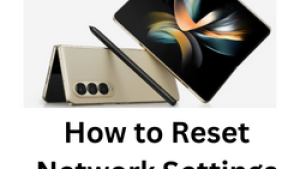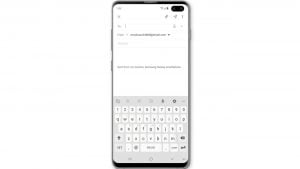External storage media are essential for smartphone owners especially those who are fond of downloading huge apps and multimedia files. While most of the recently rolled out smartphones come with bigger storage capacity, they may still not suffice. And for this very reason, external storage media are offered. Thus whenever the internal memory of your phone is getting low and you cannot afford to delete any saved files, all you have to do is buy a compatible SD card for your device, format then mount it and you’re all set to store files in it.
However, there are some factors that wouldn’t make it this easy. In fact, many people were complaining about having trouble using an SD card since their phone’s couldn’t just read the card. This issue has also plagued some users of the Galaxy S9. And this is what’s tackled in this post. If you happen to face the same issue in which your Galaxy S9 cannot read the SD card, then feel free to refer to the simple solutions I’ve mapped below.
Before going further, if you found this post because you were trying to find a solution to your problem, then try to visit our troubleshooting page as we’ve already addressed most of the commonly reported issues with the phone. We’ve already provided solutions to some of the problems reported by our readers so try to find issues that are similar with yours and use the solutions we suggested. If they don’t work for you and if you need further assistance, fill up our Android issues questionnaire and hit submit.
How to troubleshoot Galaxy S9 that can’t read SD card
Before you troubleshoot though, verify and ensure that you are using the right SD card type for your Galaxy S9. Samsung’s Galaxy S9 supports all the latest microSD card specs including class 10, U3 UHS speed class, and read/write speeds of up to 100 MB/s and 90 MB/s respectively. This means you can use a microSD, microSDHC, or a microSDXC card to expand memory space up to 400 GB.
First solution: Soft reset/reboot your Galaxy S9.
If this is the first time you encounter an SD card error, then it’s likely just among other random errors that can easily be remedied by a device restart or soft reset. Here’s how it’s done:
- Press and hold the Power and Volume Down buttons simultaneously for up to 10 seconds.
- Then release both buttons when the phone restarts.
A soft reset dumps cache and errant temporary data from the phone’s internal memory including those that might have caused conflict on the phone’s SD card reading system. This won’t affect any personal data stored on the phone memory.
Second solution: Unmount then mount the SD card again.
Aside from restarting the phone, removing and reinstalling the SD card can also be considered an option to clear minor software errors that might have caused some conflicts. Before removing the SD card, unmount it to prevent causing damage to the SD card or files in it. Here’s how it’s done:
- Unmount the SD card by going to Settings-> Device maintenance-> Storage-> More option-> Storage settings-> SD card-> then select the option to Unmount.
- Turn your phone completely off.
- With the display facing up, head over to the top corner of your phone and then remove the card tray by inserting the removal tool or a paperclip into the provided slot. Doing so will unlock the tray.
- Gently pull out the tray and then remove the SD card.
- Check the card for any visible signs of damage or dirt. If there’s none, insert the SD card back into the tray with the gold contacts facing down.
- Push the card tray back into its slot then press in to secure it.
- Turn on your phone.
- After the phone boots up, mount the SD card again by going to Settings-> SD card and Phone Storage menu. Finally, tap the option to Mount SD card.
Afterwards, try to open and access the SD card and see if your device is already able to do so. If the SD card is still not recognized, try the next solution.
Third solution: Boot your Galaxy S9 in safe mode.
You can also try booting up your phone in safe mode to rule out errant third-party apps from the culprits. All third-party apps are bypassed and temporarily disabled in safe mode, thus leaving all pre-installed/stock apps running. If the phone reads the SD card while in safe mode, then it’s an indication that a third-party app is to blame and that app must be removed. Here’s how to enable safe mode on your Galaxy S9:
- Press and hold the Power button until the power menu shows up on the screen.
- Touch and hold (long press) on the Power off option until it switches into a Safe Mode option.
- Then tap on Safe Mode.
If your phone is still unable to read the SD card while in safe mode, then it’s either due to some fatal system errors, if not hardware damage.
Fourth solution: Format SD card on your Galaxy S9.
Formatting the SD card means wiping everything from it like a factory data reset on a smartphone. This can fix the problem if corrupted files in the SD card are to blame. Doing so however will cause you to lose important files you saved in the SD card. To format SD card on your Samsung Galaxy S9, follow these steps:
- Swipe up on an empty spot from the Home screen to open the Apps tray.
- Tap Settings.
- Tap Device maintenance.
- Tap Storage.
- Tap Menu.
- Select Storage settings.
- Tap SD card.
- Select Format.
- Tap Format again to confirm action.
- Finally, tap Done to complete the entire formatting process.
Reboot your phone after the SD card is completely formatted. If necessary, mount the SD card again and then try to see if it’s now detected by your phone.
Fifth solution: Reset all settings on your Galaxy S9.
Before you do a full factory reset, you still can try resetting the settings on your Galaxy S9 to their defaults. This will discard all customizations without affecting personal data and settings of downloaded apps on your phone. This may help if the problem is attributed to invalid settings or options. Reset all settings on your Galaxy S9, simply follow these steps:
- Swipe up on an empty spot from the Home screen to open the Apps tray.
- Tap Settings.
- Select General Management.
- Tap Reset.
- Select the option to Reset settings.
- Tap RESET SETTINGS to continue.
- If prompted, enter your PIN.
- Then tap RESET SETTINGS again to confirm
After all settings are reset to defaults, your phone will restart by itself. If your Galaxy S9 still failed to read the SD card after the settings reset, then this is when you consider opting for a master reset or factory data reset on your Galaxy S9.
But before you do so, test your SD card on other compatible devices or computer that supports the SD card type you’re using. If your other devices are able to read or detect the SD card, then the problem is on your phone. This is where a master reset or factory data reset can be deemed as the last resolution. There may be some settings on the phone that are configured in such a way that doesn’t permit the device to detect the external storage device or some errant apps might have barred your phone from recognizing the SD card. If you wish to continue with a master reset though, be sure to back up all important files saved on the phone storage to other external storage media so you can restore them later. Then continue with these steps to carry out a factory data reset through your Galaxy S9 settings menu:
- Tap Settings from the Home screen.
- Scroll to and tap on General management.
- Scroll to and tap Reset.
- Select Factory Data Reset from the given options.
This will trigger the system to wipe out all your data and personal information from your device. Bugs and software glitches are also obliterated in the process hence allow your phone to have a clean fresh start.
Your phone should reboot by itself when the reset is finished. After it reboots, you can complete the initial setup process and configure your Galaxy S9 as new.
Other options
If none of your other devices are able to read the SD card, then it’s probably corrupted and no longer working. This is when you consider trying other SD card, preferably a new one and see if it’ll work. If your Samsung Galaxy S9 still failed to read or recognize the new SD card even if it’s included in the list of supported SD cards for Galaxy S9, then you may need to get your phone examined by a Samsung technician for any indications of hardware damage. This is a must-do if there were prior instances of accidental drops or liquid exposure on your phone.
Connect with us
We are always open to your problems, questions and suggestions, so feel free to contact us by filling up this form. This is a free service we offer and we won’t charge you a penny for it. But please note that we receive hundreds of emails every day and it’s impossible for us to respond to every single one of them. But rest assured we read every message we receive. For those whom we’ve helped, please spread the word by sharing our posts to your friends or by simply liking our Facebook and Google+ page or follow us on Twitter.




![Samsung Galaxy S8 started running slow after an update [Troubleshooting guide]](https://thedroidguy.com/wp-content/uploads/2017/06/Samsung-Galaxy-S8-running-slow-300x169.jpg)
![How to fix a Huawei P10 smartphone that won’t turn on? [Troubleshooting Guide]](https://thedroidguy.com/wp-content/uploads/2018/02/huawei-p10-facebook-has-stopped-300x169.jpg)



![How to fix Samsung Galaxy Note 8 Black Screen of Death [Troubleshooting Guide]](https://thedroidguy.com/wp-content/uploads/2017/11/galaxy-note-8-stuck-logo-300x169.jpg)







